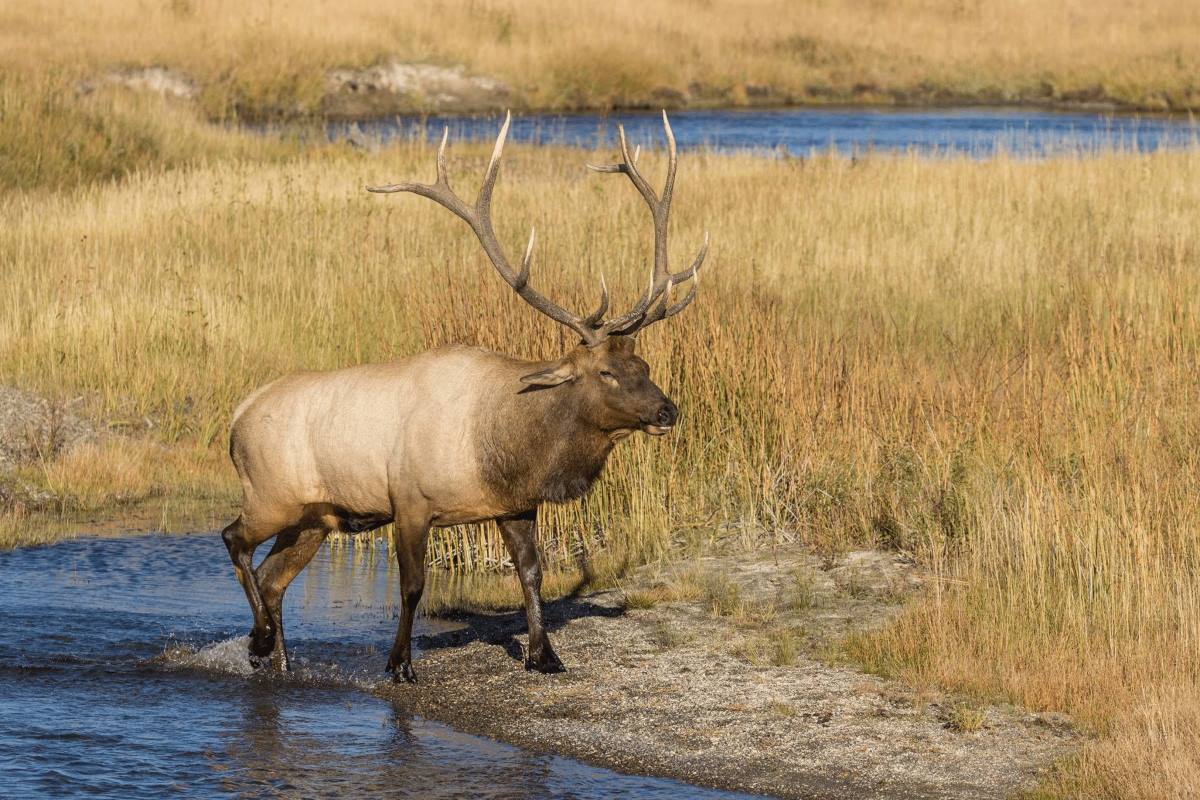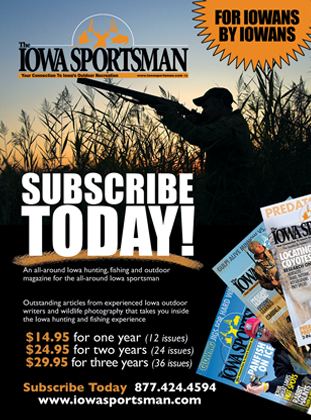So you Want to go Elk Hunting…

So you Want to go Elk Hunting…
In the May issue of Iowa Sportsman I advised readers, “Don’t put off until tomorrow, that which can be done today. Life is short and none of us are guaranteed tomorrow. Instead of talking about that hunting trip out West or fishing trip up North, set a date and commit to it.”
My family never had the opportunity to go elk hunting together. As kids and adults we often talked about going hunting in Wyoming and dreamed about the sights and sounds countless times. Unfortunately, my Dad passed from colon cancer in 2014, and my oldest brother lost his fight with melanoma in 2019. Thoreau said, “Make the most of your regrets; never smother your sorrow, but tend and cherish it till it comes to have a separate and integral interest.”
With the pain of losing Dad and our big brother burning in our hearts, Jay and I resolved to attend the 2020 Iowa Deer Classic with a purpose- to honor their legacy by initiating our plan to go elk hunting together out West.
When we arrived at the Deer Classic in March, the mission was simple- gather as much information from as many elk hunting outfitters as possible. By the end of the visit, we collected bags full of brochures and jotted down copious notes about the various people we met. In the weeks after the show we debriefed; comparing pros and cons, reading online reviews, and narrowing the options. Like most guys on a budget, the biggest considerations were experience vs. cost.
During these conversations, several important questions emerged. What type of hunt did we want? What compromises were we willing to make? How much could we realistically afford to spend? What if we came home without killing an elk? These fundamental questions and others loomed large as we painstakingly worked through the decision making process.
If you are considering going elk hunting or have already started planning a trip, please ask yourself the following questions.
What type of hunt and overall experience are you looking for?
- Are you physically capable of hiking several miles into a wilderness area with a heavy pack? Would you be able to pack out a full sized elk on your own or with a partner across that same distance?
- Are you interested in packing into a remote area on horse, mule, or ATV?
- Would you be comfortable roughing it out of a simple tent with minimal supplies for several days? Or would hunting out of a wall-tent, lodge, or hotel, better suit your needs?
- Do you want to hunt difficult and remote mountain terrain, high desert country, or rolling sagebrush foothills?
- Can you endure bone chilling late season temperatures and snow, or would you prefer mild early season weather?
- Would you be happy to harvest ANY elk, or are you only looking for a trophy bull?
- Would you prefer to use archery equipment, and if so, can you dedicate the time needed to adequately tune, practice and prepare?
- If you’re planning to rifle hunt, do you already own a high-powered rifle or would you need to buy/borrow?
- Inexperienced nonresident rifle hunters should seriously consider an ideal vs. “adequate” rifle/bullet combination for a once-in-a-lifetime hunt.
Most outfitters I talked to recommend heavy for caliber bullets in .30 caliber or larger. Elk can certainly be killed with smaller caliber rounds with good bullet placement at appropriate ranges. However, inexperienced elk hunters on their first hunt with limited time, spending thousands of dollars on a rare opportunity, are wise to bring more than enough gun. Popular rifle recommendations include the .308 Win., .300 Win. mag., and .30-06 SPRG, shooting 160-180 grain bullets at 2,700 feet per second or more. All three of these options are perfectly capable of taking elk out to 300 yards and beyond in the hands of hunters that have adequately prepared for the hunt.
Do you have the skill level and experience required for a successful DIY hunt?
- Are you confident you can accurately pack the essentials for an extended backcountry elk hunt without running out of supplies?
- Do you have experience camping for several days without modern conveniences and preparing your own meals?
- Do you understand and have you practiced basic wilderness survival skills?
- Do you know how to efficiently dress and quarter an elk?
- Do you know how to properly protect the meat from spoilage and predators after it’s been harvested, especially if not immediately packing it out?
- Are you familiar with seasonal elk behavior, calling, travel patterns, and target locations?
- Can you take enough time off work to increase the probability of success on a DIY hunt? Guided hunts are typically 6 to 8 days in length. However, a DIY hunt may require twice as much time for scouting, locating, and setting up a stalk.
- According to outfitters, the two main reasons hunters don’t shoot an elk are inadequate physical conditioning and marksmanship. Can you push yourself to meet the increased physical challenges of a DIY hunt? Are you willing to commit the time required to perfect your shooting from multiple ranges and angles?
If you’re not comfortable with a DIY hunt, do you know how to select an outfitter?
- Start by comparing several outfitters in the area you plan to hunt.
- Find out how long the outfitter has been in business.
- Are they licensed and insured?
- Is the outfitter a member of a state outfitter and guides association?
- Are they listed in a local chamber of commerce?
- Do they have a Better Business Bureau rating, and do they have any complaints filed against them?
- Do they have a Facebook or Instagram page and/or web site with pictures and client reviews? Does the outfitter respond to negative reviews?
- What value-added services do they provide? For example, do they manage preference point applications and provide reminders about license/tag purchasing deadlines? Do they provide gear recommendations or referrals?
Can they manage local hotel reservations? Are they willing to dress and quarter your elk and pack it out for no extra charge? Can they facilitate butchering at a local meat locker? Are they willing to pack and ship your meat home if it can’t be processed before you leave?
- Are the hunts considered all inclusive, or do hunters need to bring their own food, snacks, and drinks?
- Soes the outfitter have its own horses, mules, and ATVs?
- Does the outfitter supply hunters with a packing list for convenience?
- Do they offer a payment plan to finance the hunt over time?
How much is it going to cost?
- For a guided hunt, outfitters’ fees will likely be the largest expense. Individuals should expect to spend from $3,500-6,000 or more for a 6-8 day hunt. In addition, many outfitters require an immediate 25-30% deposit to reserve your booking.
- The location of the hunt and where you live will determine whether it is reasonable to drive or fly to the destination. Most often, splitting fuel and a couple nights in a motel with a buddy are still cheaper than flying and having to ship meat home.
- Many states require nonresident hunters to purchase preference points in advance of the hunt. These fees vary widely from state to state.
- It’s important to note that license and tag fees are in addition to outfitter fees. These costs also vary widely between the states and can range from around $500 to over $1,000.
- If you’re only interested in shooting a bull elk, you need to carefully review each state’s nonresident regulations and drawings before you book your hunt. For example, the Colorado outfitters we spoke to estimated it would take 5 years to draw a nonresident rifle season elk tag; assuming you buy preference points every year. In other states, over-the-counter bull tags may be available during special and late seasons.
- In some states, combination tags are available to increase the probability of a harvest. For example, in Montana hunters can purchase an elk/deer combo for around $1,000 and add a black bear tag for an additional $350.
- Because these species all inhabit the same areas, having the additional tags helps increase the odds of bringing an animal home even if it’s not an elk.
- Because you will likely book the hunt a year or more in advance, trip insurance is HIGHLY recommended. Like any insurance policy, it pays to shop around, and make sure to pick one that fully covers trip cancellations AND trip interruptions. Savvy sportsmen should be able to find a policy for $250-$500 depending on the total cost of your trip.
- Gratuities are always appreciated for successful hunts, and basing tips on 10-20% of the outfitters’ fees is customary.
- Do not assume that your favorite whitetail hunting gear is adequate for elk hunting. The outfitter we selected provided a detailed packing list specifically designed to maximize our comfort and odds of success. For example, we are expected to bring a sighted-in rifle equipped with an average-sized scope, comfortable sling, and minimum bullet size of 160 grains. In addition, he advised to replace cotton clothing, socks, and base layers with wool.
Cotton is non-wicking and loses all of its insulative properties when wet. In contrast, wool retains 80% of its insulation even when wet and is highly effective at wicking moisture from skin. This helps in preventing blisters on long hikes and keeping you warm even after sweating. Wool is also naturally resistant to odor-causing bacteria; extending the amount of time it can be worn and reducing the risk of being winded by animals. The bottom line is that the gear required for your elk hunt can easily add hundreds or thousands of dollars to the overall price tag. On the bright side, in many cases this one-time investment in equipment that can be used on future hunts in Iowa and elsewhere.
Conclusion
Planning an elk hunt is not for the faint of heart. It requires significant investments of both time and money to maximize your odds of success. However, even with perfect planning, it’s still hunting and there are no guarantees. As a result, it’s important before booking a trip that sportsmen and their families acknowledge that even if everything is done right it’s still possible to come home empty-handed.
The primary objective of this article was to reduce some of the anxiety and “analysis paralysis” sportsmen face when considering hunting elk. I also hoped it would inspire folks not to make the same mistake my family made and put off until tomorrow, that which can be done today. If your family’s dream is to go out West on a big game hunt, set a date today and commit to it. Life is short and none of us are guaranteed tomorrow.
*Jay and I booked an early season rifle hunt for September 2021. We are headed to northwest Montana for an 8-day remote Western elk hunt in the Bob Marshall Wilderness complex. Until then, I wish you the best of luck planning your elk hunting adventure!
by Joel Johnson
Home – Iowa Sportsman
August 2020


